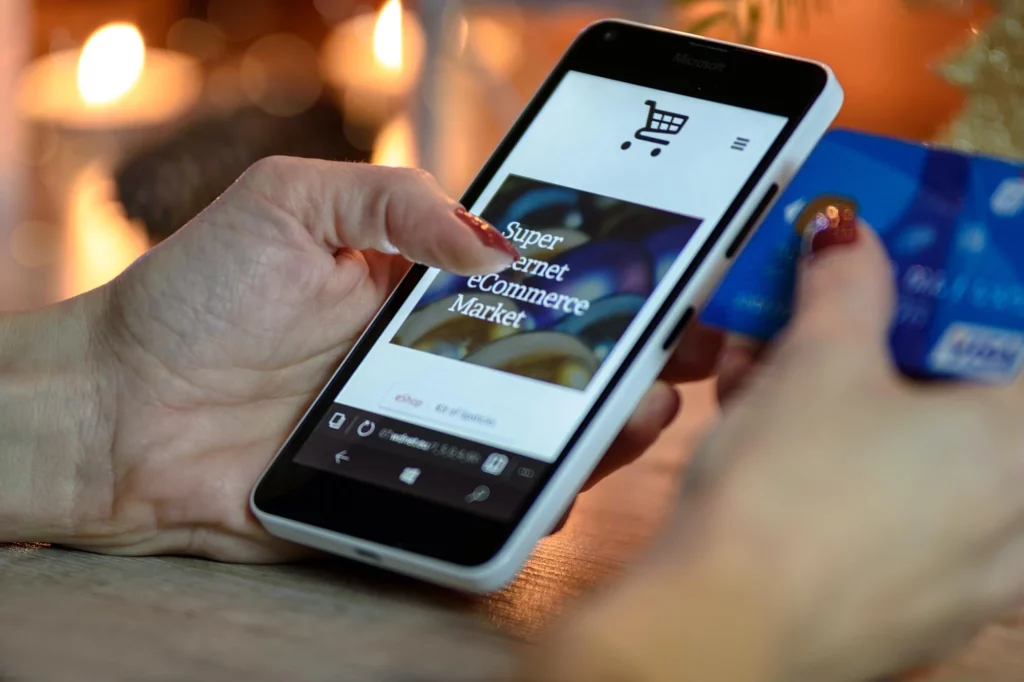How will you know if you’re on the right track without seeing where you’ve come from? While significant goals can often feel impossible to meet, breaking them down into smaller tasks can make them much more manageable. Plus, being able to measure your progress objectively helps show if you’re on the right path. KPIs are a great way to calculate how much progress you’ve made in the areas that matter most. Online stores can benefit from eCommerce metrics to help measure performance over time.
Tracking KPIs helps monitor growth, and in addition to these markers, the various metrics available for eCommerce stores help to find ways of calculating success. Through this article, gain a deeper understanding of the KPIs that every eCommerce store should measure and what the many metrics can tell you about your performance.
What are eCommerce KPIs?
KPIs, or key performance indicators, are the milestones that evaluate a business or employee’s progress. KPIs can be for individuals or groups as a whole and help identify if progress has been made where needed.
For instance, an example of a KPI could be increasing online traffic by 30% by the end of the year or sending 30 cold emails a day. Both of these monitor performance on different levels, and whether or not these goals are met can give a clear indication of whether or not you’re on the right track.
The Importance of Measuring Performance
If you’re an eCommerce owner, you probably want to see growth (obviously). But some entrepreneurs forget that growth must be calculated and filled with intent. More often than not, growth occurs after checks have taken place to make all the proper steps have been taken. Reflecting on what you’ve done in the past to understand what’s right for the future is where eCommerce metrics and KPIs come in.
Here are some of the reasons you should use performance indicators to point your eCommerce store in the right direction.
Give you data-driven insights
Data-driven insights can help you predict future performance based on the past. Looking at past metrics can help you predict how much you’ll need to spend on that ad, which social channels are best for your new campaign, or even what types of products your customers will be most interested in. All of this comes from seeing the numbers that show what has worked in the past.
Help you make adjustments to stay on track
What better way is there to grow your store than by referring back to past mistakes and triumphs? After all, you should never make the same mistake twice! By looking back on your past to see what worked well for your business and what didn’t, you can adapt a plan taking this all into consideration. Past performance can show you the best possible route to take based on what has brought you success before.
Increase eCommerce sales
Setting KPIs holds you accountable for the future growth of your business. And with hard work comes more sales. The goals you will set for yourself will likely directly or indirectly affect the overall performance of your sales. Simply setting goals for the performance of your store will have you working harder than ever to meet them!

Best eCommerce Metric Examples
Now that you understand why you should be measuring the success of your business in an objective way, what can we actually do about it? Here are 10 examples of ways you can measure the performance of your store using eCommerce metrics (and trust us, keeping track of them will pay off).
1. Successful first delivery attempts
Successful first attempts at delivery refer to what percentage of your deliveries make it to customers the first time you try. Measuring first delivery attempts is a great way to see if your eCommerce company is meeting expectations on all fronts. Although many factors can affect a delivery’s success, understanding how successful your delivery provider is can give you some insight into how well your store completes the buying process.
To calculate your percentage of successful first attempts at delivery, divide your number of successful first deliveries by your number of total deliveries.
2. Percentage of on-time deliveries
The percentage of on-time deliveries tells you how many of your deliveries make it to customers within the estimated time frame. This is an important eCommerce metric to track because it significantly impacts overall customer satisfaction.
To calculate your percentage of on-time deliveries, divide the number of on-time deliveries by your total number of deliveries and multiply that by 100.
3. Average delivery time
Your average delivery time shows you how long it takes for most customers to receive your products. You can speed up your average delivery time by offering same-day delivery to your customers.
Your average delivery time will be found through your delivery provider, who can usually provide the metrics of how long it takes for each package to make it to the customer. If you have access to something like the FlashBox dashboard, you can find this information yourself!
4. Customer acquisition cost (CAC)
Customer acquisition cost (CAC) refers to the money it costs a company to actually bring on a new customer. Your CAC can vary greatly between ads, days, or even channels. You might pay more to acquire a customer from Facebook than you do from TikTok.
Most businesses use this eCommerce metric to determine profitability. If you can have a clear understanding of how much you’re spending in relation to how much you’re earning, you’ll be able to determine how much you can (or should) spend on retaining new customers.
One easy way to think about this is in relation to marketing or advertising. To calculate CAC, divide your total amount spent by the number of customers it brought you. If you spend $100 running an ad and you retain ten sign-ups because of it, the CAC is $10 (100/10).
5. Customer lifetime value (CLV)
If you want to use CAC to your advantage, pay attention to your customer lifetime value (CLV). Customer lifetime value refers to the average profit you make off each customer during their time with you (minus what you had to spend to acquire them). This shows the average value a customer brings you.
Knowing your average CLV can also help you create plans to earn more from each customer you acquire. Think subscriptions, up-sells, promotions, and more!
Hint: Using the CAC and CLV metrics together, you can create a plan to estimate how much you’re likely to make off any customer that buys from you!
6. Customer return rate
Your customer return rate indicates what percentage of your customer’s return for more than one purchase. The ratio of new vs old customers can be very telling of the overall customer experience your buyers receive. A high return rate usually means customers are happy with the service, while a low rate of returning customers might indicate that overall satisfaction rates are low.
To calculate customer return rate, rely on a tool like Google Analytics to show you how many customers came back after their first purchase.
7. Return on ad spend (ROAS)
Return on ad spend, or ROAS, refers to how much you earn from your advertising. In other words, what you can get in return for spending money on ads. The more valuable or effective your campaigns are, the more your ROAS will be. Monitoring your ROAS can be a great indicator to find out if your ads are performing well or not.
To calculate your ROAS, divide the revenue you earned from any campaign by how much you had to spend. ROAS is often shown as a ratio, like 5:1 (or $5 made for every $1 spent). This ratio is how much you make back based on your original advertising investment.
8. Social media engagement
Social media engagement might be an eCommerce metric you’re already monitoring. This refers to the number of people who engage or interact with your posts across various social media platforms.
As an eCommerce store, there are many benefits to using social media as a way of marketing your products. A few would be the low cost of running it and the massive audience you can achieve on each individual platform.
Each social media platform offers its own ways of tracking engagement. Platforms like Instagram offer insights to see how many people viewed, liked, or shared your posts and stories. Other social media management tools will incorporate everything into one, making it easier to see all the metrics in a single place. These metrics are great for understanding how extensive your reach is and seeing which platforms are bringing you the most attention.
9. Shopping cart abandonment rates
Abandoned cart rates show how many customers add items to their cart but fail to complete their purchase. Although there are multiple reasons for customers to abandon carts, each one stings all the same.
Paying attention to how many incomplete checkout processes you have can help you decide if you need to change part of the process. Abandoned carts might point to high delivery prices, problems with the checkout processes, or methods that are too lengthy or difficult.
To find your rate of abandoned carts, use the formula 1 – (number of shoppers who complete transactions/number of shoppers who just add items to the cart).
10. First response time (FRT)
Your first response time is essentially how long it takes you to respond to a query from a customer. This eCommerce metric measures how many minutes, hours, or even days it takes for you to get back a customer’s concern or comment.
To manually calculate your FRT, divide the sum of your first response times by the number of tickets you received. So if you had three tickets, and they took 20 minutes, 15 minutes, and 73 minutes to respond to, your FRT would be about 36 minutes. If this number is high, you might want to set some KPIs to lower it to offer better customer support.
KPI Examples
You should now understand what metrics you should be looking to measure and understand. These metrics can be used to measure smaller parts of larger goals, making up pieces of a KPI.
What performance indicators can you put in place to improve store performance?
Example goal #1
Increase delivery satisfaction
Let’s say you want to see how your customer’s satisfaction with regard to deliveries can be improved.
In this case, the eCommerce metrics you could make use of are:
- Percentage of on-time deliveries: for understanding how many orders make it to customers on time
- Average delivery time: for understanding how long it takes customers to receive orders
- Successful delivery attempts: for understanding how many deliveries are successful the first time around
If your goal is to increase overall delivery satisfaction, making subgoals to improve these three metrics will be the best course of action. If these goals are not being met, you might need to look beyond your own responsibilities. Many of these metrics will be directly related to who you choose as a delivery partner.
Example goal #2
Decrease spending per customer
Let’s say you want to see if you can spend less on each customer you bring in.
In this case, the eCommerce metrics you could make use of are:
- Return on ad spends: for understanding if the ads you run are bringing in enough money in return
- Customer acquisition cost: for understanding how much it costs you to acquire new customers
If your goal is to pay less for each new customers, you might aim to increase your ROAS, but decrease your CAC. Breaking down these eCommerce metrics into smaller parts of a larger goal can help you visualize how to start making progress.
How FlashBox Helps Meet KPIs
FlashBox’s innovative delivery solution helps eCommerce owners meet their goals and KPIs. We take care of the delivery standards, and in response, other parts of your business will benefit as well!
1. Increases successful first attempts at delivery
FlashBox can significantly help you increase your successful delivery rates. Successful deliveries also help save you time and money by not having to redo them. To make the first attempts at delivery as successful as possible, FlashBox improves communication between drivers and customers and uses innovative technology to keep every updated on parcel locations.
2. Percentage of on-time deliveries
With a 99.9% on-time delivery rate, you can be sure your customers will no longer have to worry about when they’ll receive their orders. FlashBox can help you meet your KPI to increase on-time delivery rates.
3. Average delivery time
Partnering with a same-day delivery provider like FlashBox can also help you shorten your delivery times and get items to customers faster. You can easily beat customer expectations by offering cost-effective, same-day delivery. All your customers, whether residential or commercial, can make the most of your fast delivery times.
4. Increase customer return rate
FlashBox merchants see as much as a 33% increase in repeat customer rates. As you know, it’s almost always cheaper to keep current customers than find new ones. Successful, reliable deliveries are one way FlashBox helps merchants retain customers for longer and builds customer loyalty.
5. Decrease shopping cart abandonment rates
Abandoned shopping carts are always frustrating, but luckily, there are ways around it. One main reason shopping carts are abandoned is unexpected delivery costs at checkout, but with FlashBox, you can limit the number of abandoned carts your eCommerce store receives.
Summary
In summary, there are nearly endless eCommerce metrics and KPIs you could be using to measure the overall performance of your store. Picking out the ones that best suit your goals will help you break down large projects into smaller KPIs, making them much more likely to be met. Put these KPIs to the test and set them for yourself!
FlashBox can help you improve delivery standards and in turn, increase overall customer satisfaction. Talk to an expert today about offering your customers the fastest, most affordable same-day delivery solution.
Interested in finding more ways to improve your eCommerce store? Keep up with us on social media for more tips, tricks, and trends.







